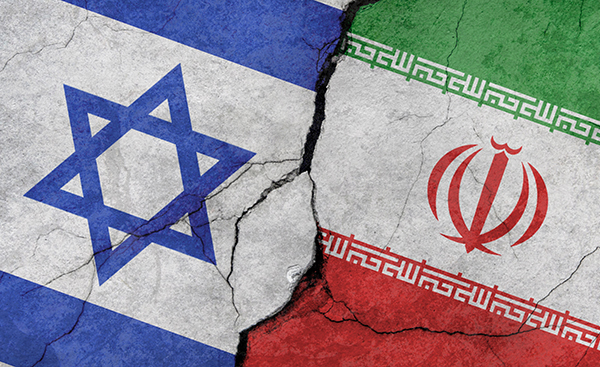In light of the intensifying conflict between Israel and Iran, now escalated to open warfare under the Israeli initiative dubbed ‘Operation Rising Lion’, discussions on the sophisticated weaponry deployed by Israel have garnered considerable interest. Amid these weapons, a 4000-5000 pound laser-guided bomb, named the GBU-28, stands out. This potent bunker-busting weapon has been an important instrument in their arsenal. Reports suggest that Israel has routinely deployed the GBU-28 in attempts to dismantle the fortified nuclear facilities of Iran, especially Fordow.
Known by its technical denomination, Guided Bomb Unit-28, the GBU-28 was originally formulated by the US during the 1991 Operation Desert Storm to meet the necessity for a weapon apt for penetrating hardened targets such as the underground command-and-control bunkers in Iraq. The design and creation of this bomb took place at Eglin Air Force Base, within an amazingly short period of just three weeks, exemplifying rapid war-time innovation. The initial model of the GBU-28 was built within an eight-inch artillery barrel, with following models incorporating the specially-designed BLU-113 bomb body.
The GBU-28, with its near 4,700 pound weight, includes a laser-guidance system empowering it to lock onto targets highlighted by a laser designator. Further advanced versions of the bomb comprise of inertial navigation (INS) and GPS guidance to enhance accuracy under challenging conditions. Equipped with a BLU-109/B warhead, this bomb is engineered to breach up to 16 feet of solid concrete or over 160 feet of earth before its detonation.
The detonation is controlled by a short-delay fuse that guarantees the explosion takes place at the ideal depth. Testing of this bomb was done at the Tonopah Test Range in the year 1991. The tests proved the GBU-28’s capacity to puncture through 22 feet of fortified concrete while still preserving substantial kinetic energy, cementing its role as an ideal weapon for targeting subterranean bunkers and hardened facilities.
The Israeli defense forces obtained 100 units of GBU-28 in 2005, with accelerated deliveries taking place in 2006 and 55 units being delivered by the end of 2009. Part of the reason behind this acquisition was the growing apprehension about Iran’s nuclear program. A diplomatic communication proposed the use of these bombs against Iran’s suspected nuclear weapons facilities, which further motivated this acquisition.
The ability of the GBU-28 to penetrate hardened structures has made it an invaluable weapon for Israel, whose air force operates advanced aircraft, like the F-15I Ra’am and F-16I Sufa, designed to deliver such hefty explosives. During Operation Desert Storm in 1991, GBU-28s were used by American F-111F aircraft to target Iraqi bunkers. This bomb was also used against Saddam Hussein’s forces during Operation Iraqi Freedom in 2003.
Despite being in the public eye, confirmed instances of Israel deploying the GBU-28 remain few and far between, although unconfirmed reports hint at its use in the 2008-2009 Gaza War and there is confirmation of its extensive use in the 2021 Gaza operation, labeled ‘Guardian of the Walls.’ These operations underscore the bomb’s role in targeting fortified structures such as tunnels and underground command centers, abilities much needed in Israel’s current conflict with Iran.
Israel’s primary aim is to dismantle Iran’s nuclear weapons and missile programs. Iran’s nuclear facilities, especially the Fordow Fuel Enrichment Plant, located deep beneath a mountain near Qom, are designed to withstand conventional airstrikes, thus presenting a formidable challenge. While Israel has succeeded in striking several sites such as Natanz and Isfahan, Fordow has tested them due to its fortified nature and considerable depth.
The layout and geological complexity at Fordow also pose additional challenges affecting the usual functioning of the fuses in bunker-busting bombs. Despite the GBU-28 being one of Israel’s most formidable weapons and even with its repute as one of America’s top bunker busters, this weapon system still cannot reach the depths secured by the Fordow facility.
Given the impasse reached by the GBU-28 with the Fordow site, serious discussions for the intervention of American airforces are underway. Arguably, the B-2 Spirit long-range stealth bomber, which has the capacity to deploy GBU-57, a colossal 30,000-pound bomb named Massive Ordnance Penetrator (MOP), could be used for such an operation, and may indeed be more effective at overcoming the secured depths of Iran’s Fordow nuclear facility.
Currently, the ultimate task espoused in Israel’s anti-nuclear weapons campaign against Iran is the destruction of the Fordow site. The fortress-like nature of this facility has thus far proved impervious to Israel’s repeated assaults. This apparent immunity has actually forced Israel to consider involving the American forces to eliminate the Fordow facility, augmenting their own attack capabilities.




